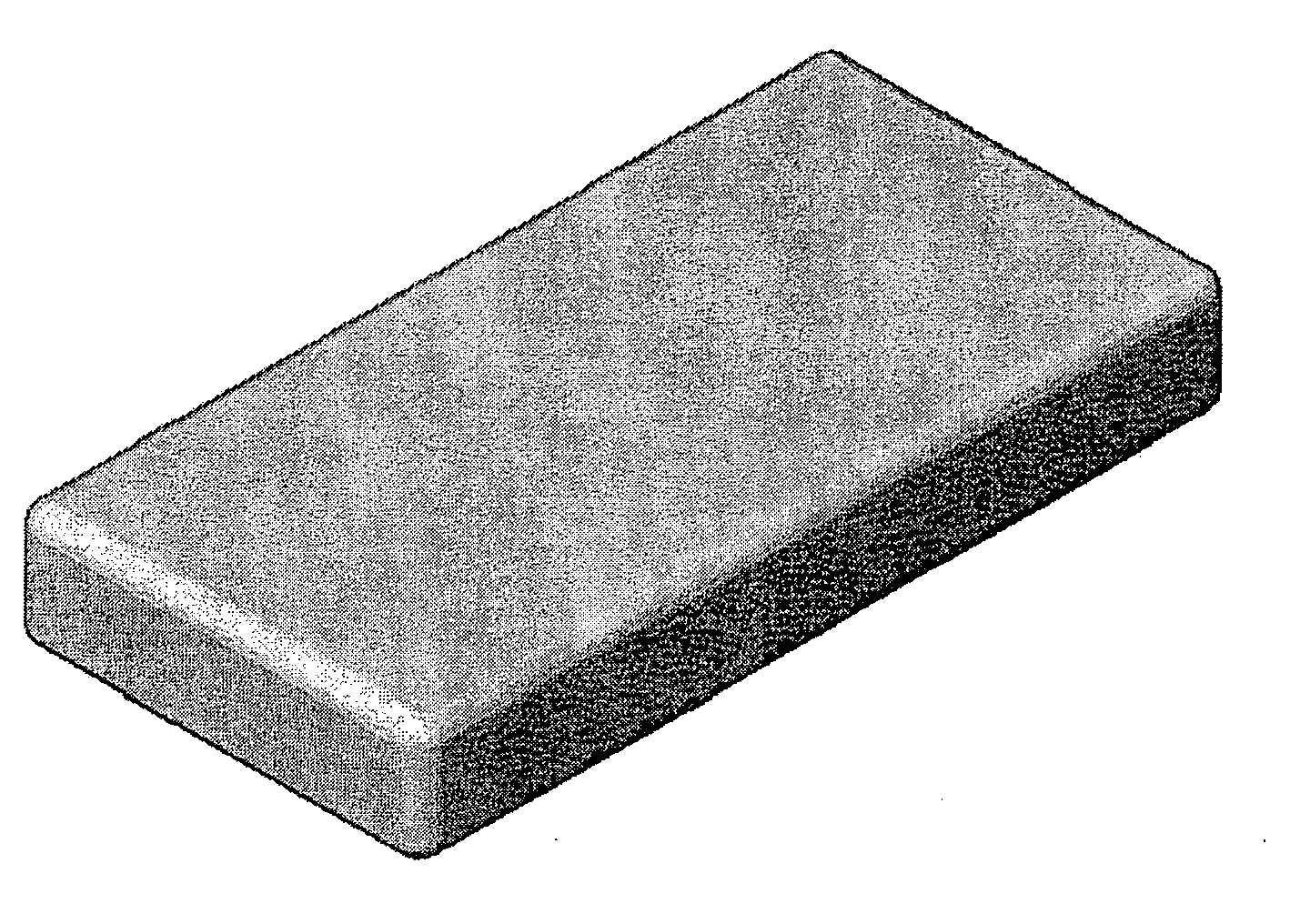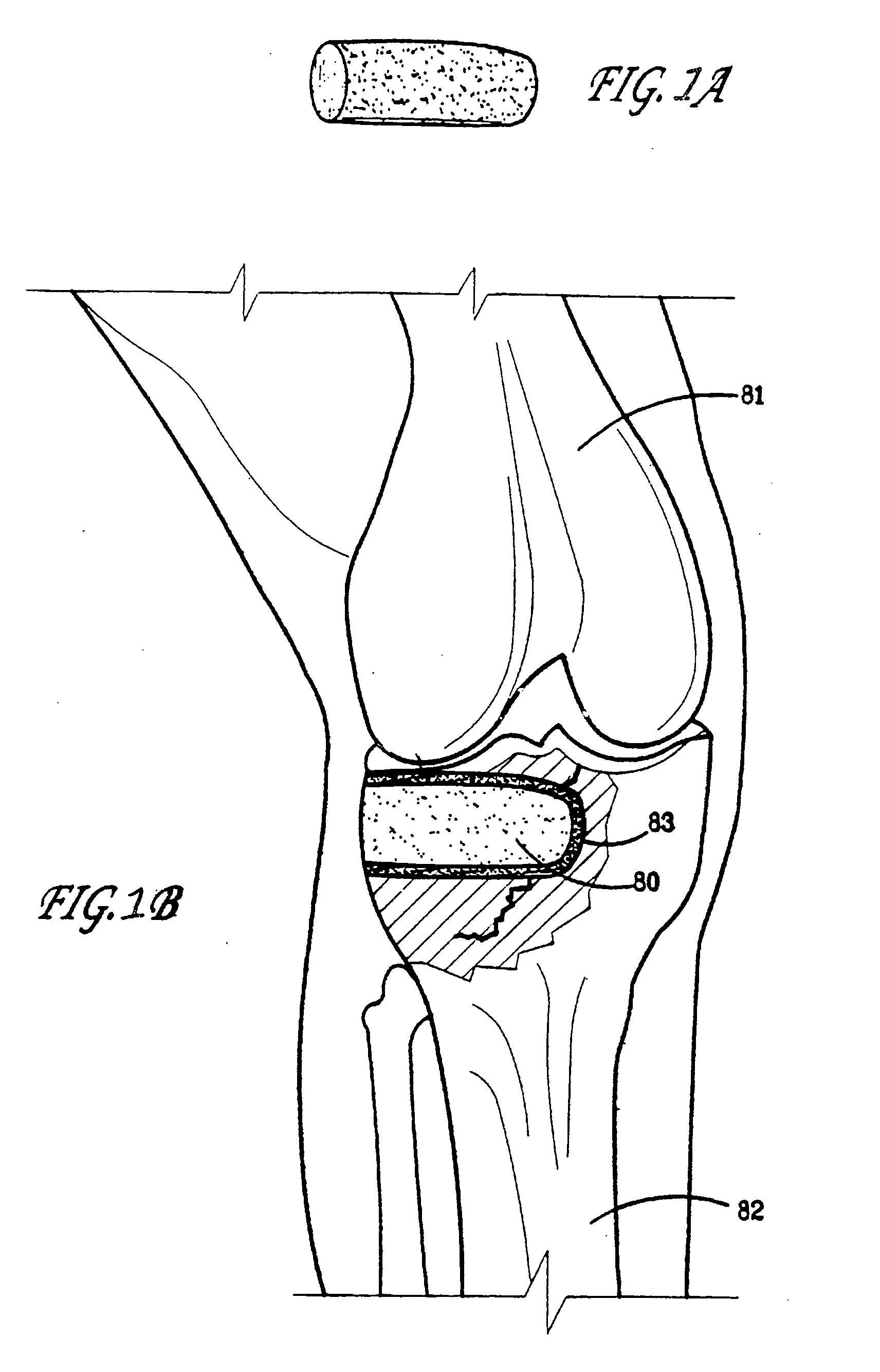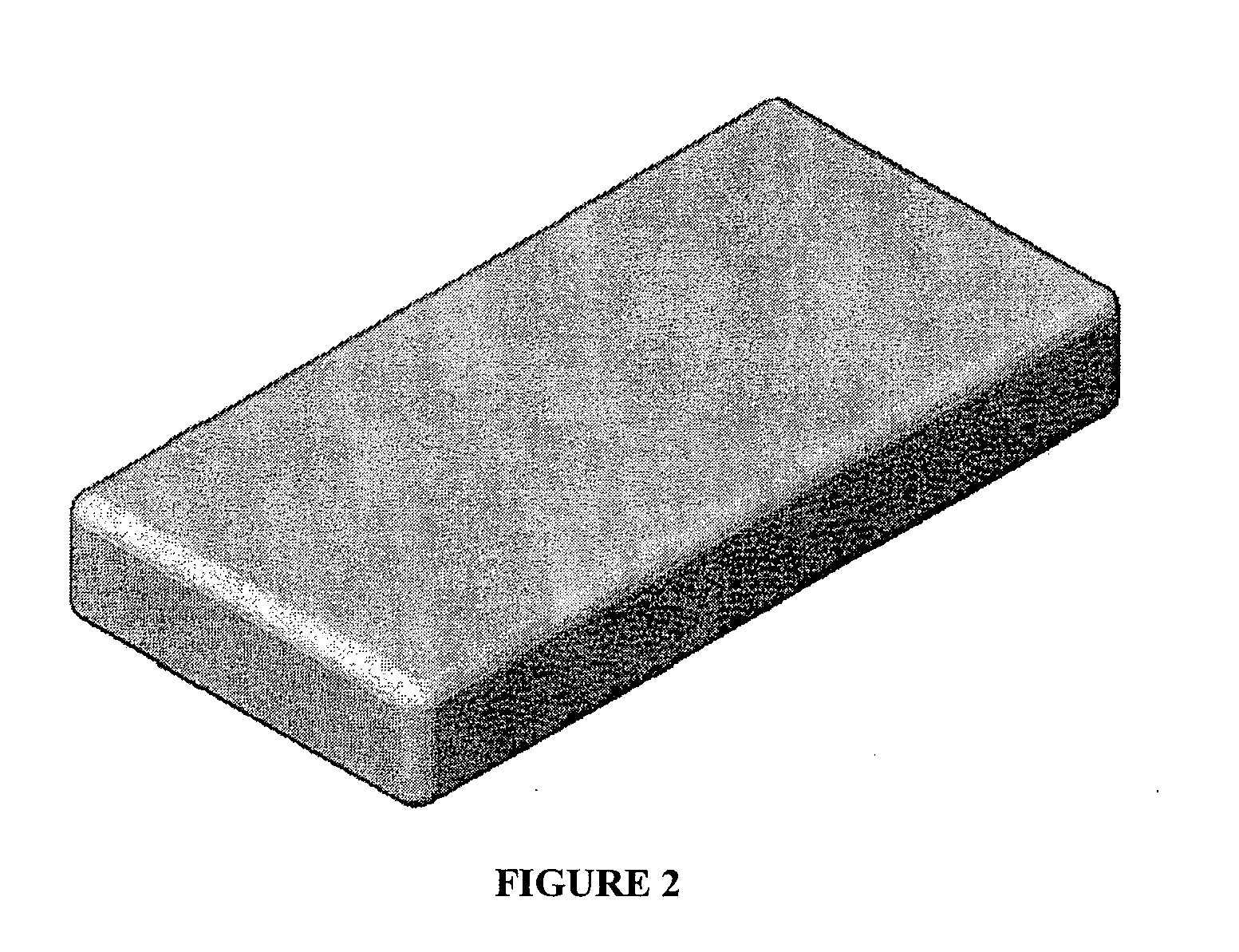Bone graft substitute
a bone graft and bone graft technology, applied in the direction of prosthesis, osteosynthesis device, peptide/protein ingredient, etc., can solve the problems of exposing the patient to a second surgery, pain and morbidity, and restricted devices in terms of shape and size variations, so as to reduce the tendency to wash away and facilitate implantation
- Summary
- Abstract
- Description
- Claims
- Application Information
AI Technical Summary
Benefits of technology
Problems solved by technology
Method used
Image
Examples
example 1
[0069] One embodiment was comprised of β-TCP, with a cation to anion ratio of Ca3(PO4)2; and medical grade Type I bovine collagen, manufactured in the following manner. Inorganic scaffolds were made using the RPR process disclosed in U.S. Pat. Nos. 5,939,039 and 6,325,987. The resultant inorganic scaffolds were crushed and sieved to obtain morsels in the size range of 0.25 mm-4 mm. The morsels were added to a fibrous collagen slurry in a wet processing room and the resultant slurry was further mixed and casted / molded into various shapes in a cleanroom. The shapes were freeze-dried and crosslinked using dihydrotestosterone (DHT) to produce resultant bone graft material shaped products.
example 2
Mineral Component of Bone Graft Material
[0070] Approximately 78%-82% by weight of some bone graft materials of the present invention is β-TCP, with the cation to anion ratio of Ca3(PO4)2. Each lot of the mineral component of these bone graft materials was tested using X-ray diffraction (XRD) to confirm phase pure β-TCP in accordance with ASTM F1088-87, Standard Specification for Beta-Tricalcium Phosphate for Surgical Implantation. In addition to XRD, Inductively Coupled Plasma Chromatography (ICP) was used to demonstrate that the levels of heavy metals in the predicate bone graft material are below those established in ASTM F-1088-87. Fourier Transform Infrared Spectroscopy (FTIR) analyses of the bone graft material were also performed.
[0071] The quantitative XRD results show that the mineral component of the bone graft material is 98.25% pure β-TCP, which matches well with the ICDS standard plot for β-TCP pictured with the representative XRD pattern of the bone graft material (F...
example 3
[0072] Bulk density of bone graft material was calculated from three representative samples. Each sample was measured in triplicate to provide an average calculated density of 0.46 g / cc+ / −0.03 g / cc.
PUM
| Property | Measurement | Unit |
|---|---|---|
| total porosity | aaaaa | aaaaa |
| pore diameters | aaaaa | aaaaa |
| diameters | aaaaa | aaaaa |
Abstract
Description
Claims
Application Information
 Login to View More
Login to View More - R&D
- Intellectual Property
- Life Sciences
- Materials
- Tech Scout
- Unparalleled Data Quality
- Higher Quality Content
- 60% Fewer Hallucinations
Browse by: Latest US Patents, China's latest patents, Technical Efficacy Thesaurus, Application Domain, Technology Topic, Popular Technical Reports.
© 2025 PatSnap. All rights reserved.Legal|Privacy policy|Modern Slavery Act Transparency Statement|Sitemap|About US| Contact US: help@patsnap.com



